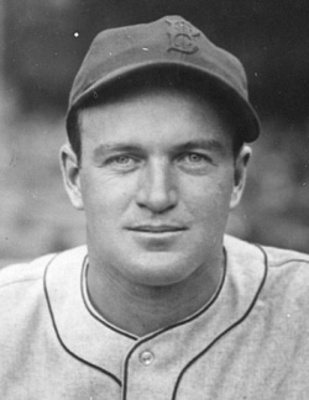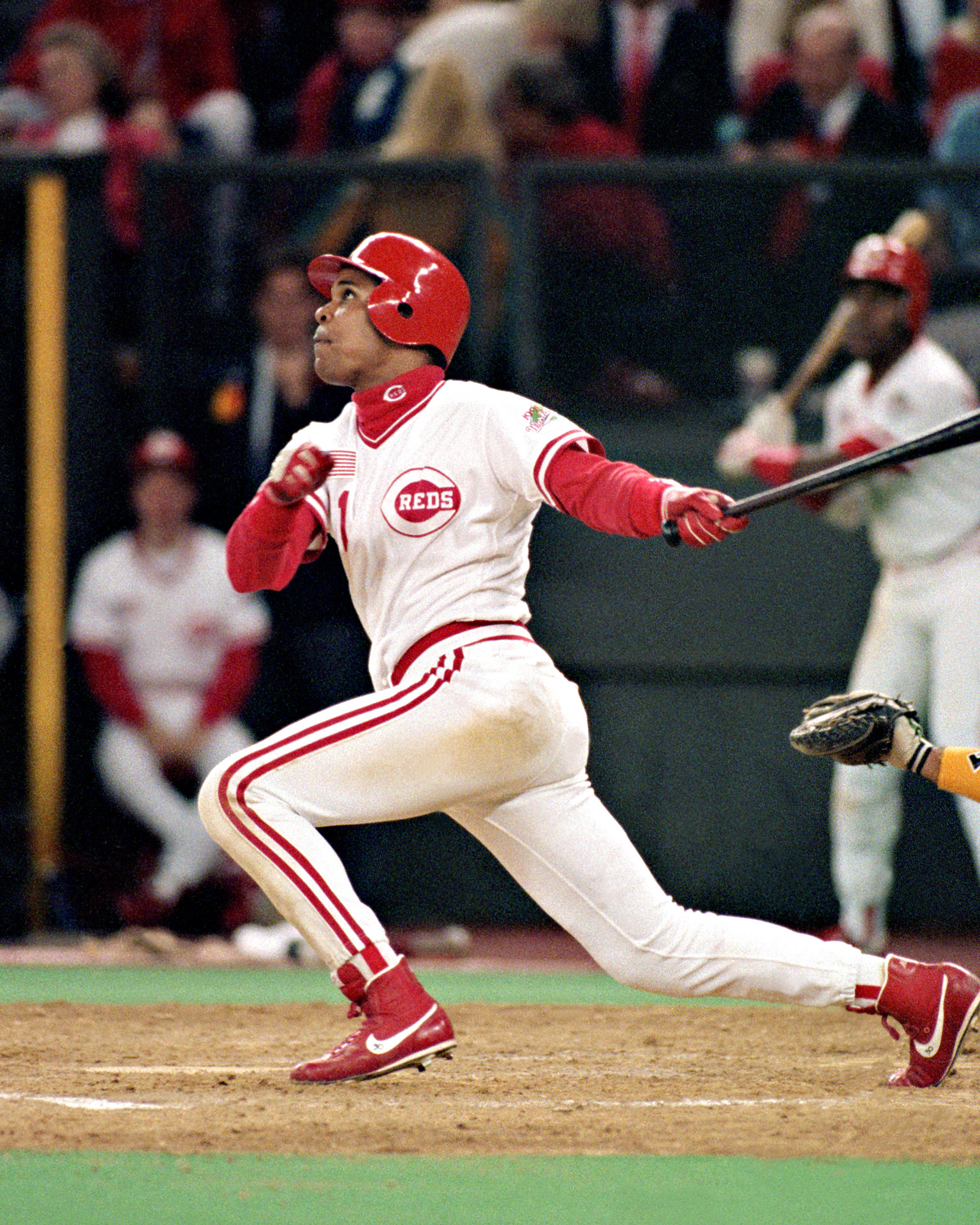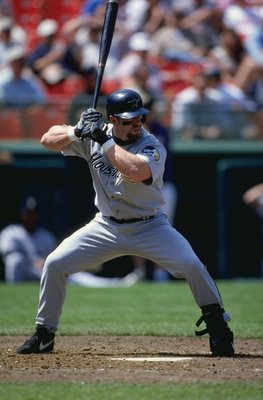The Red Sox were the best American League team from 1900-1918. The Red Sox had won the first World Series over the Pirates in 1903. They followed that with a first place finish in 1904 but there was no World Series because McGraw and the Giants refused to debase the NL pennant by facing an inferior league. The Red Sox went through a brief rebuilding from 1906-1911 as the Tigers and Athletics fought over the top spot but by 1912 the Red Sox dynasty was in full bloom. They would win the World Series in 1912, 1915, 1916 and 1918. Their 5 World Series wins in the first fifteen World Series played was by far the best. Only the Ahletics' three (1910, 1911 and 1913) came even close. The years that they weren't reaching the World Series they were usually finishing second.
Their cast of characters read like a Hall of Fame roster. Tris Speaker, Duffy Lewis and Harry Hooper were the greatest trio of outfielders anyone had ever seen. The pitching staff of Dutch Leonard, Ernie Shore, Herb Pennock and Babe Ruth were almost unhittable. Unfortunately for Red Sox fans, and very similar to the Cubs' experience, the end of the dynasty came much more quickly than anyone expected. As Speaker was sent to Cleveland after the 1915 World Series win and Ruth (and most of the team) were shipped to New York after the 1919 season, the remnants of the team were a shell of the recent glory days. It crumbled almost overnight.
1918 saw the Red Sox beat the Cubs in the World Series. 1919 saw the team go from first to 6th and the glory days of Boston were over. No one told the Red Sox they were done. They all expected to be right back at the top. Carl Mays had come to the Red Sox in 1915, the same day as Babe Ruth. They arrived in the same car. Reported to the ballpark together. Were issued their uniforms together. Then Ruth got to pitch and Mays got to mostly sit and watch.
His first year in Boston was below what he expected. He finished with a 6-5 record but the years that followed were spectacular. He won 18 games in 1916 but lost 13 and every one of those loses were painful to him, like a personal failure 13 times. He went 22-9 in 1917 and 21-13 in 1918. He was one of the reasons that the Red Sox dominated but he was the opposite of Ruth. While Ruth made sure everyone knew what he had done and who he was, Mays didn't want recognition. Mays wanted wins.
Mays was one of those extremely competitive pitchers who did not accept losing and did not accept mistakes by the fielders behind him. Mays took every loss like a knife to his heart and every win as the inevitable result of hard work, his own hard work and certainly not the team's. To Mays, as the pitcher, the game was his. The fielders were just extras who would find a way to screw it up for him. When Mays lost it was the fault of the fielders who made an error or the hitters who didn't hit. The curve ball that didn't break, allowing Joe Jackson or Ty Cobb to crush a hit was somehow someone else's fault. He is what most people would call a sore loser. He just wanted to win and he would do anything to win.
His teammates hated him and the feeling was mutual. As far as he was concerned they could all go to hell. If a player made an error Mays wouldn't wait until they reached the dugout to discuss it. The reaction was immediate and hateful. More than once he screamed at his infielders for errors in front of the entire stadium. If an outfielder threw to the wrong base or missed the cutoff man allowing a runner to advance Mays would stand on the mound and glare at the offending player. This was his game and he would start it up again when he knew that the outfielder was properly shamed for his mistake. He flat out refused to pitch if Jack Barry was playing at second base. An unidentified teammate was quoted as saying "I was never on a club that a fellow was disliked as much as Mays."
The hatred wasn't contained to his teammates. The league as a whole despised him. He had a long running feud with several players including Ty Cobb and Tris Speaker. He had a reputation for throwing at batters. He had a reputation for cutting, scuffing, mashing and scratching the ball before throwing the pitch causing it to break in unpredictable directions. He had an unusual side arm motion and when he leaned into the delivery it was almost an underhand throw that made it even more difficult to pick up the flight of the ball. Most players in this league could not stand Carl Mays.
As the 1919 season progressed the frustration in the Red Sox locker room increased. No one could quite figure out what the hell was wrong with this team and as the powerful White Sox streaked towards infamy, the Red Sox lingered around the middle of the league. Mays started the year winning his first two starts of the season but it went south quickly.
He didn't even have to pitch in the game to get into trouble at the park. In the Memorial Day doubleheader in Philadelphia he was angry that the Athletics fans were pounding on the tin roof of the dugout. He came out of the dugout and launched a ball into the stands grazing a woman and hitting a fan in the head. When fans got angry he came back out of the dugout and punched a fan in the face. By the time the Red Sox left town there was a warrant for his arrest.
When he took the mound on July 13th his season was officially a disaster. He had dropped to a record of 5-10. The Red Sox, defending champions, were facing the White Sox, featuring the infamous Joe Jackson, Chick Gandil, Happy Felsch, Swede Risberg and Buck Weaver. This game was done almost before it started as Chicago scored four in the first.
Mays went back out in the second inning and things continued going poorly. With a runner on first Mays delivered to the plate. When the runner took off for a steal attempt the first baseman screamed out "He's going!" and there was a flurry of movement. Mays delivered the ball to the plate as quickly as he could while Wally Schang, behind the plate, shifted his weight to make a throw to second. The pitch smacked Schang's glove and he immediately rifled the ball down to second base to try to get the stealing runner. Mays turned to watch, hoping they would catch the base stealer. The last thing he needed with this White Sox lineup was a runner in scoring position. Then he felt something explode in his head like a bomb. The throw from Schang drilled Mays right in the back of the head.
Mays was fuming. He retired the side. Walked off the mound. Walked to the clubhouse, packed his things. Walked out the door. Walked to the train station and didn't stop until he got off the train. Before he left the locker room he told a teammate who came looking for him to tell the manager he had gone fishing. That was essentially what he did. He took the train to Boston, cleaned out his Fenway locker and went to stay with his in-laws in Pennsylvania. He told the press he had thrown his last pitch for the Red Sox.
This was the craziest thing a player had done to this point in the league. To not only walk out on a team in the middle of the year but then to tell the press that you want to be traded was insane. This was before collective bargaining, before free agency, no-trade clauses and before unions. There were no trade demands. There were no players' rights. You played where you were told to play when you were told to play and if you didn't then you didn't play again ever for anyone. Mays could have very well killed his own career. Amazingly he didn't
There was still a fight at the top of the league and several teams were looking for pitching to make that final push to the pennant. Among the teams were the Indians, White Sox and Yankees. Every team made an offer to the Red Sox and every team swore they had the deal done. Then Ban Johnson, the American League President, stepped in and made a ruling. Mays was suspended and no trade could be made until Mays returned to his team, paid a fine and served an additional unpaid suspension. According to Johnson, no team could trade for Mays because he was designated as a non active player until he served his punishment. Meanwhile, the Red Sox ignored the decree by Johnson and announced a trade to the Yankees.
The Indians were furious. When Johnson had told the league to stop the trade talks they stopped but they were willing to give up more than the Yankees did to get him. The most furious of all was Charles Comiskey, White Sox owner. He actually did have a trade in place that would send Mays to the White Sox (imagine the difference in the 1919 World Series if Mays had been on the White Sox, although check back in two weeks to find out why it may have been the same outcome) but when Johnson announced that Mays could not be traded he also stopped trade talks. Comiskey and Johnson had a long history of hate towards each other that will be explored more thoroughly in a later post but the decision by Johnson to step in led to all out chaos in the entire league.
While the National League sat back and laughed at the ridiculous AL situation, the owners in the AL not only tried to undercut each other by getting Mays in a trade, they were now split on whether Ban Johnson should actually be the President of the League. A meeting was called to discuss whether Johnson still held the faith of the league owners. Comiskey (Chicago), Jacob Ruppert and Til Huston (New York), and Harry Frazee (Boston) demanded that Johnson step down. Charlie Somers (Cleveland) (not surprising since Johnson owned stock in the team), Phil Ball (St.Louis), Clark Griffith (Washington), Connie Mack and Ben Schieb (Philadelphia) and Frank Navin (Detroit) told the other three teams to keep their mouth shut.
Johnson made a ruling that the Mays' trade to the Yankees was null and void and issued a court injunction to forbid him from playing. The Yankees and Mays ignored it. Johnson's authority was ruined and he remained as little more than a figure head for the rest of his tenure. Meanwhile, pitching for the Yankees, Mays turned his season around and went 9-3 for the Yankees leading them to their best finish in team history to that point.
The story of Carl Mays doesn't end here. In fact it gets better. Check back next week for The Saga of Carl Mays Part 2: The Death Pitch.
Trivia Question:
Babe Ruth played on 10 teams that reached the World Series (1915, 1916, 1918, 1921, 1922, 1923, 1926, 1927, 1928 and 1932). Of those ten years, how many seasons was Carl Mays a teammate of Ruth's?
Answer to Last Week's Trivia Question:
Hope and TJD were both close to having the correct answer last week, however, both were incorrect. TJD guessed 7 total Cy Young Awards. Hope guessed three. Hope's answer of three was correct in that there were three separate Tigers' pitchers who won MVP's, however, the question was the total number of awards. TJD's guess of 7 would have been correct had I counted MVP awards for pitchers prior to the Cy Young. Since the question was how many times had a Tigers pitcher won the Cy Young Award the two MVP awards in 1944 and 1945 did not count. Denny McLain won the Cy Young in 1968 with a 31-6 record. He followed that up by sharing the 1969 Cy Young with Mike Cuellar of the Orioles. The next Tigers' Cy Young winner was not until their amazing 1984 season when their closer Willie Hernandez went 9-2 with 32 saves and 1.92 ERA. Finally, Justin Verlander won the 2011 Cy Young. The correct answer was 4.












